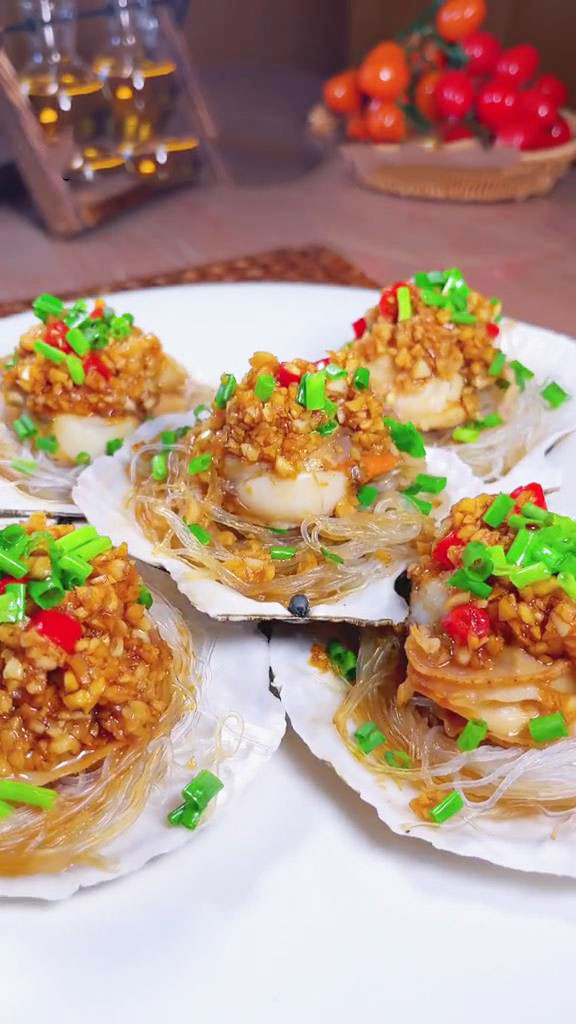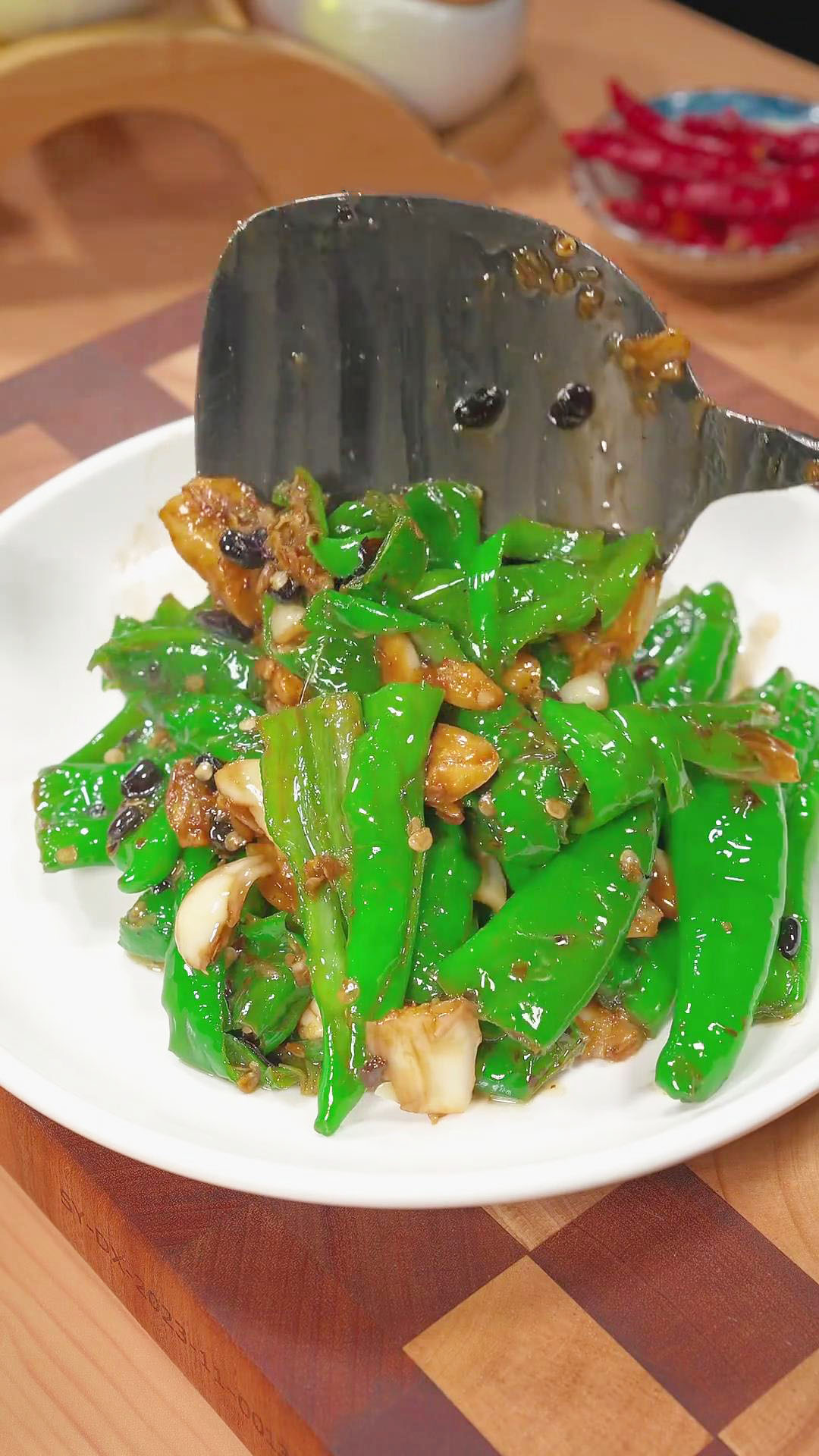Need a quick sweet fix? Then you will love this easy-to-prepare taro sago dessert soup (xi mi lu). Make this in a snap with 4 main ingredients: taro, rock sugar, sago, and coconut milk.
It is a nourishing and sweet dessert that melts in your mouth with a delightful chewy sensation in every bite. It is the perfect after-meal dessert or afternoon snack that you can eat either warm or cold.
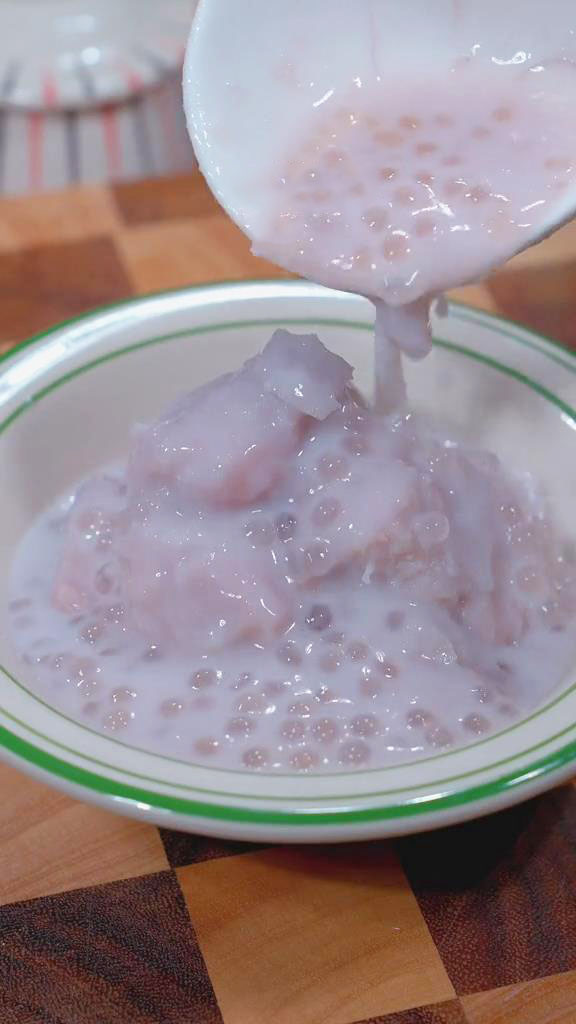
First, What Is Taro?
Before anything else, let’s get to know about this starchy vegetable in terms of taste and texture. In this way, you will know what to expect and how to handle it. For your information, taro is similar to a regular starchy potato.
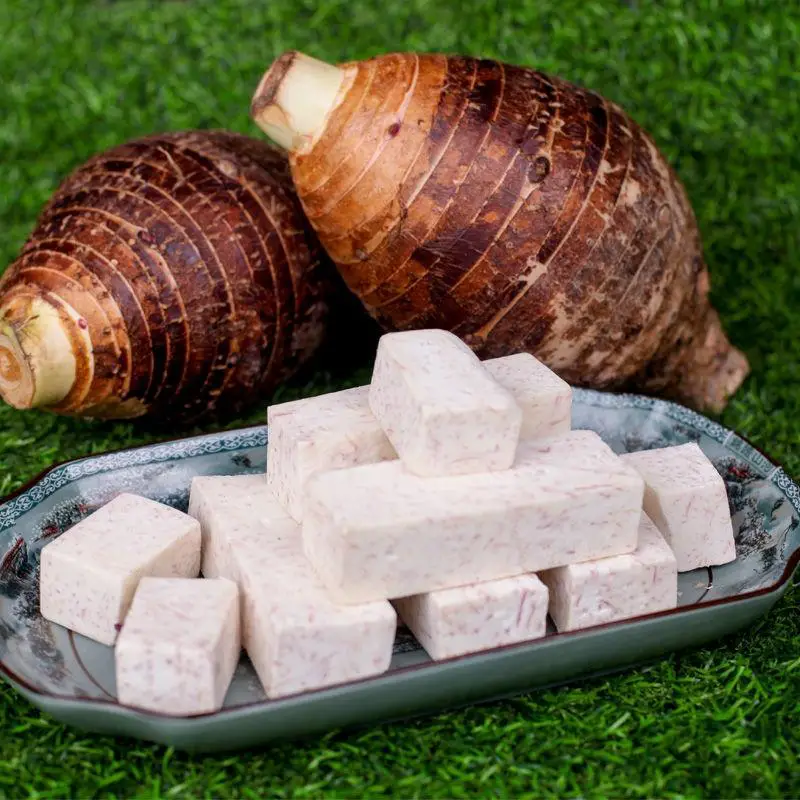
It is a root vegetable from the Araceae plant family with edible corm and leaves. Its skin is brown-grayish, while its flesh is white with tiny light purple dots. The taste is sweet with an earthy and nutty combination. You can use taro in various Asian dishes, such as taro bun with taro paste, taro sago dessert soup, taro bubble milk tea, deep-fried sugared taro, and taro balls, to name a few.
One special thing to note about this vegetable is that it is toxic when eaten raw since it has high oxalate crystals that can cause a toxic reaction. Moreover, touching it may also cause irritation or allergic reaction to the skin. Thus, the best way to safely handle taro is to use food-safe gloves, ensure it is well-cooked before eating, and wash your hands immediately after touching it.
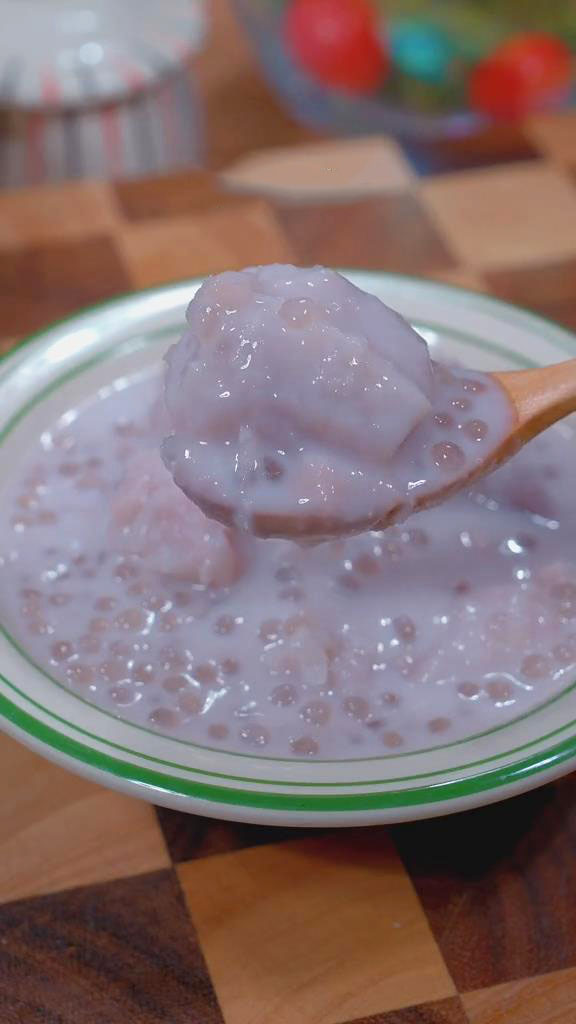
All You Need To Know About Sago Pearls
Sago (西米) is another key ingredient in this dessert that you will love for its melty springy consistency. These are small round pearls that are added to the dessert soup for a bouncy consistency. Keep in mind sago is different from tapioca pearls.
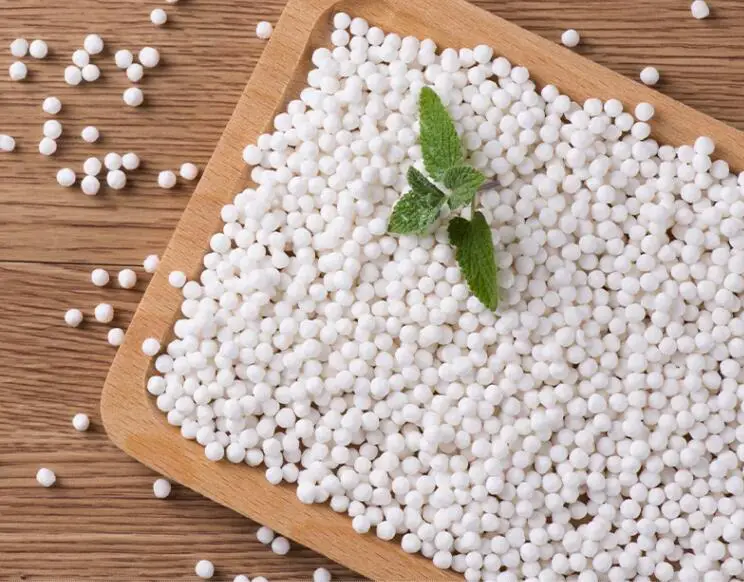
They are quite similar in usage, taste, and texture but are different in terms of origin. Sago is extracted from sago palm trees, while tapioca is derived from cassava root. The reason why tapioca is used more in desserts and drinks is because it is more affordable and accessible.
Sago is typically more expensive and difficult to obtain. You may be wondering – why that is the case. It is because it usually takes 10 years for palm trees to mature and harvest. So, the production of sago pearls is not as often as tapioca.
So, if you have the “real” sago pearls, that’s great for a more authentic sago dessert. However, it is perfectly fine to substitute sago with tapioca since it is also round, chewy, and neutral-tasting. You can try to find sago in local Asian grocery stores or in online supermarkets like Amazon.
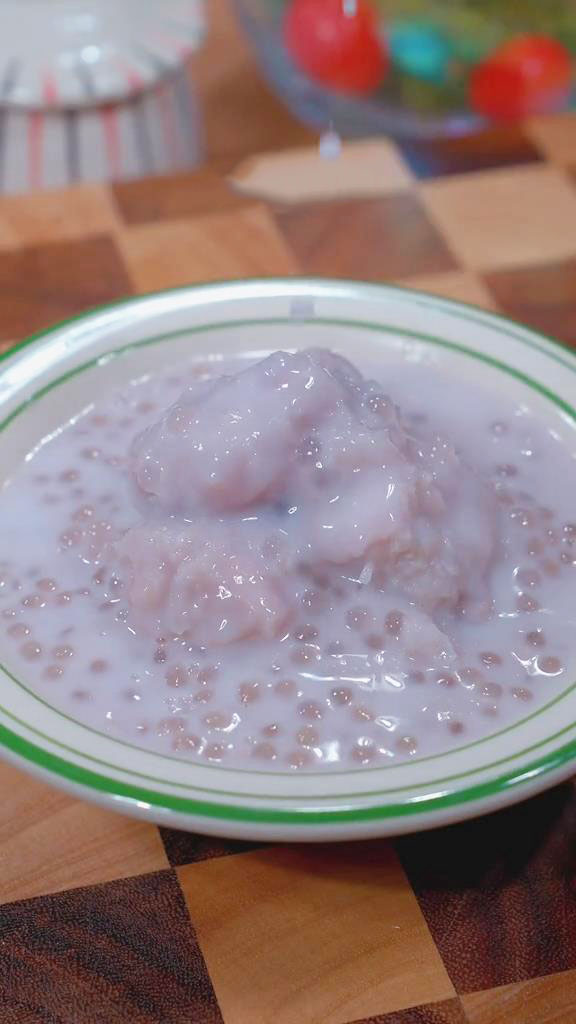
Tips For A Perfect Taro Sago Dessert Soup
This simple recipe uses 4 ingredients: taro, sago, coconut milk, and rock sugar. However, you can change or add more ingredients according to your preference, such as nuts, corn, bananas, and sweet potatoes.
Should you want to change an ingredient, I listed some suggestions below on the best alternatives to use. Moreover, I also focused on several tips and techniques when it comes to cooking this dessert. Read this part first before proceeding with the recipe instructions.
Sago
- Sago alternatives: As mentioned, tapioca pearl is the best alternative to sago because it is similar in appearance and texture. If you want to learn more about their similarities and differences, refer to my guide Sago Vs. Tapioca Pearls. Should you be unable to buy sago or tapioca, try making your own with only 3 ingredients by following my recipe How To Make Homemade Tapioca Pearls. The next closest chewy alternatives you can use are boba, sweet potato balls, lychee, grass jelly, and coffee jelly. These are great alternatives if you want those bits of chewiness.
- Sago cooking tips:
- Prevent the sago pearls from sticking and clumping by boiling them with a generous amount of water. This allows the pearls to move freely around the pot as you stir them continuously.
- Sago pearls should be stirred continuously so they don’t stick to the bottom of the pan.
- It is best to cook them alone without other ingredients or else the entire dessert soup will become too starchy.
- In my guide on How To Cook Sago, make sure you do not skip the steps for simmering in hot water and rinsing with cold water.
- Leftover sago pearls: Don’t worry about having leftovers since you can use them for a variety of desserts and drinks. You can make Mango Pomelo Sago Dessert 楊枝甘露, Mango Sago Dessert, and Chinese Coconut Sago Pudding. If you like a cold beverage, make Winter Melon Tea or a mango smoothie with coconut milk.
Taro
- Prevent skin irritation: As previously mentioned, I suggest using food-safe gloves or using a clean kitchen towel when holding and chopping taro. Make sure you wash your hands thoroughly as soon as you come in contact with taro. Some people may not have any reaction to taro, but it is best to check if you are the same or not.
- Taro alternatives: I always recommend using fresh ingredients for the best flavor. However, if you find it difficult to find fresh taro, you can use frozen or pre-packed taro. In case there is no taro available, you can swap taro with sweet potato.
- Leftover taro: In case you have extra taro left, don’t throw it just yet. You can make steamed taro bun and taro paste.
Coconut Milk
- Coconut milk alternative: The creaminess and richness of coconut milk make it the best option for this dessert. You get the coconutty flavors for that tropical vibe. You can use coconut cream as an alternative or other plant-based milk such as soy, oat, and almond. If you are using other types of milk, you can simply add coconut flakes, shredded coconut, or coconut flavoring to still have that coconut flavor.
Rock Sugar
- Rock sugar alternative: Chinese desserts typically use rock sugar for its mild sweetness. If you don’t have rock sugar, you can use other types of sugar, such as white sugar, brown sugar, or coconut sugar. If you prefer a certain level of sweetness, you can adjust the sugar.
Things Needed To Make Taro Sago Dessert Soup
Kitchenware
- 2 Clay pots or cooking pots (1 for boiling taro, 1 for boiling sago)
- Stirrer
- Dessert bowl
Ingredients
- 500g peeled and cubed taro (adjust the amount according to you preference)
- 100g rock sugar
- 1000ml water
- Sago (choose the amount of sago you like to cook)
How To Make Taro Sago Dessert Soup
In 10 easy steps, you will be able to create this sweet taro sago dessert soup. The recipe is divided into 3 main parts: prepare the taro, boil the sago, and assemble the ingredients. Watch how I prepared this recipe on Instagram and Tiktok recipe tutorial reels.
Prepare The Taro
Prepare the taro by peeling it and cutting it into large cubes.
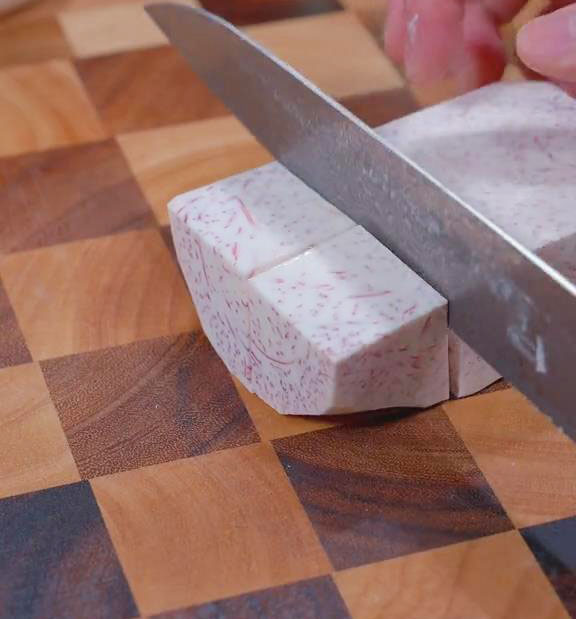
Then, place it in a clay pot and add rock sugar and water. Cover and simmer for 15 minutes.
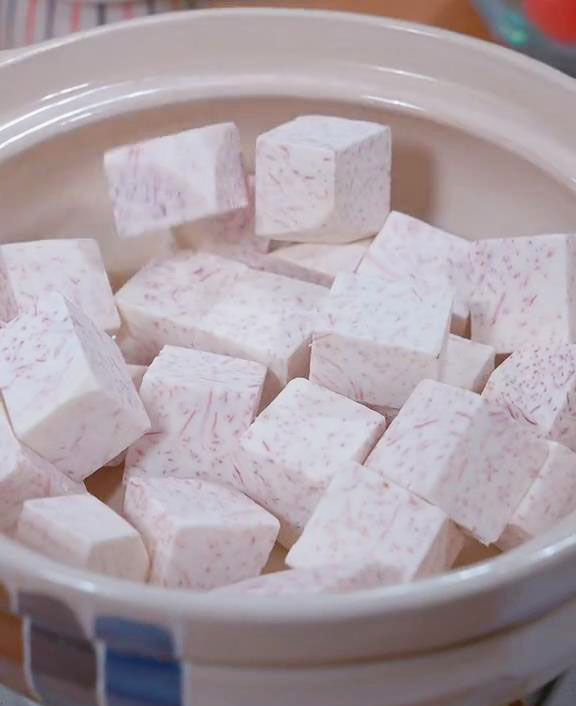
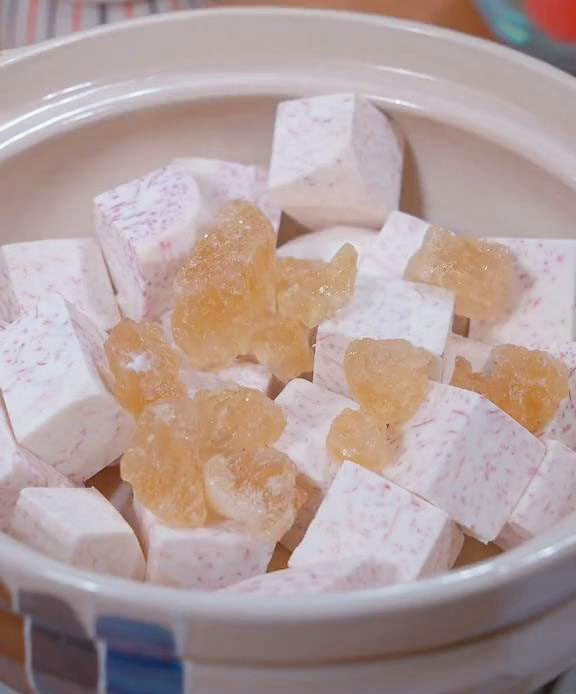
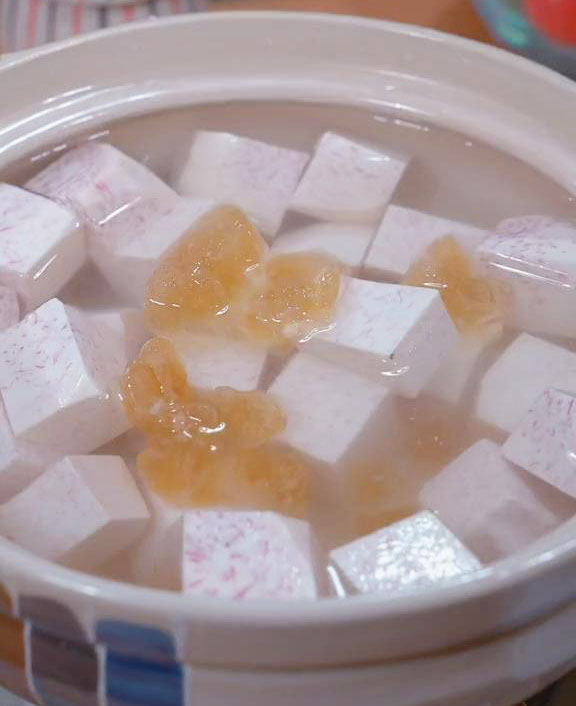
Boil The Sago
While the taro is cooking, prepare another pot with water for boiling the sago and bring it to a boil.
When the water boils, add the sago and cook for 15 minutes. When cooking sago, it’s important to stir well to ensure even cooking and prevent sticking.
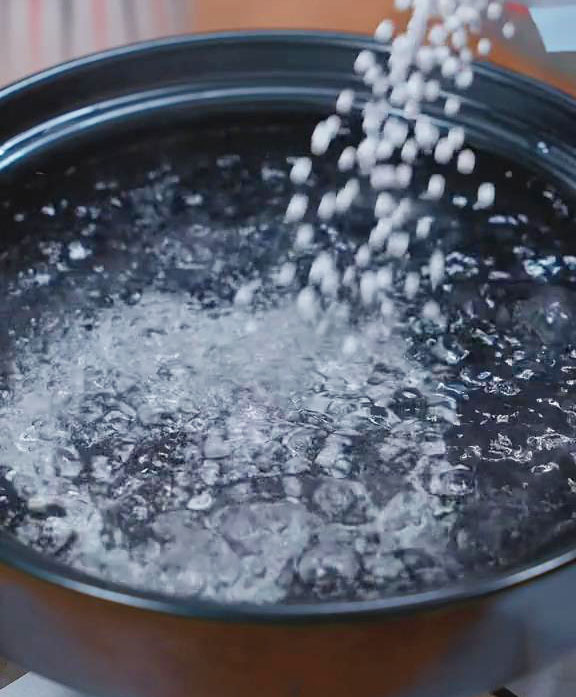
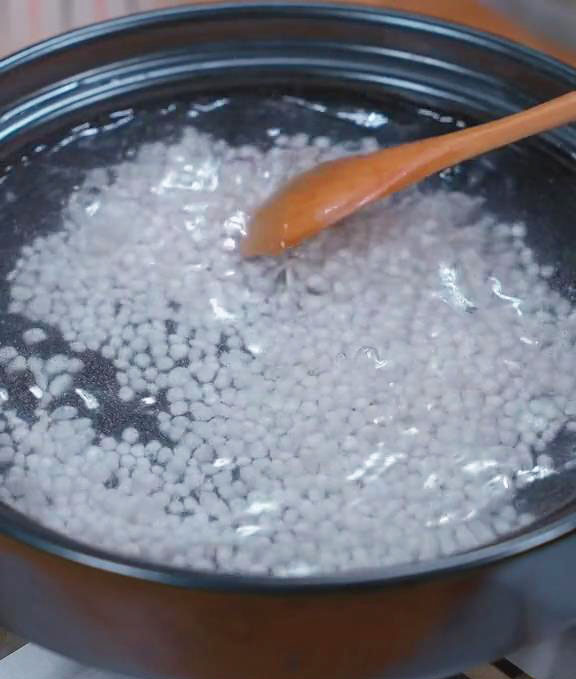
After 15 minutes, turn off the heat and let it simmer for another 15 minutes. The sago should be completely transparent and should sink to the bottom. If the center of the sago is still white, let it sit longer in hot water to continue cooking.
Then, drain the water and rinse the cooked sago in cold water. Rinse it three times. This step is important to remove excess starch and prevent clumping.
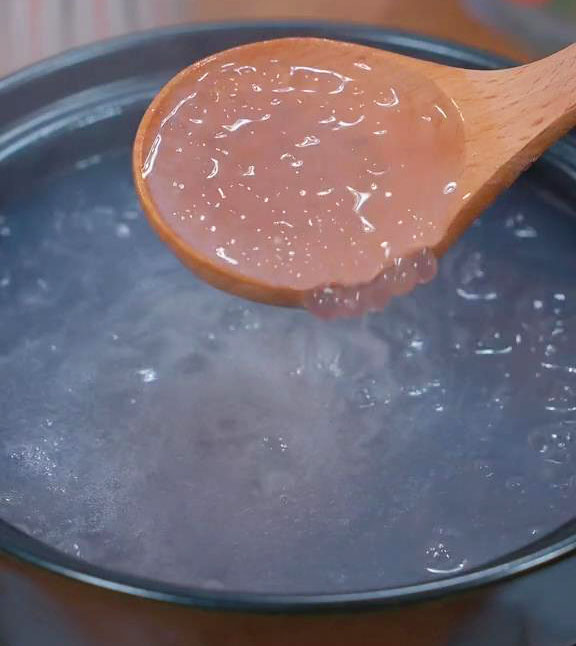
Assemble The Dessert
Next, go back to the boiling pot of taro and add coconut milk.
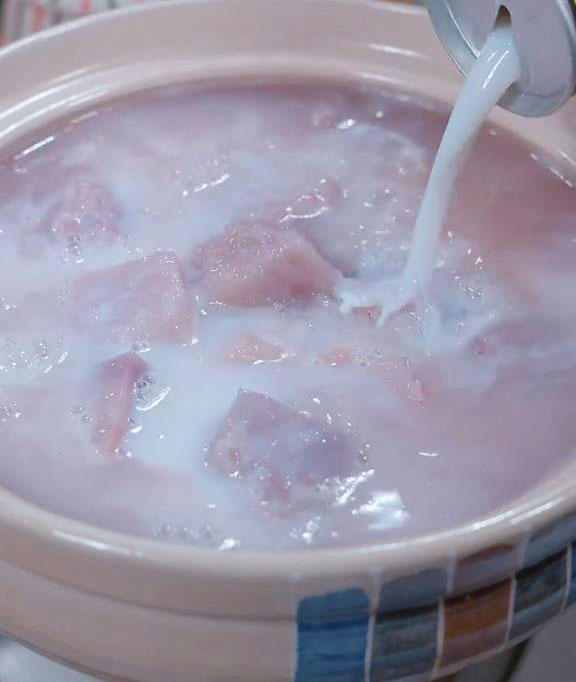
Add the sago and mix well. Refrain from over-stirring as this might cause the ingredients to break and become mushy.
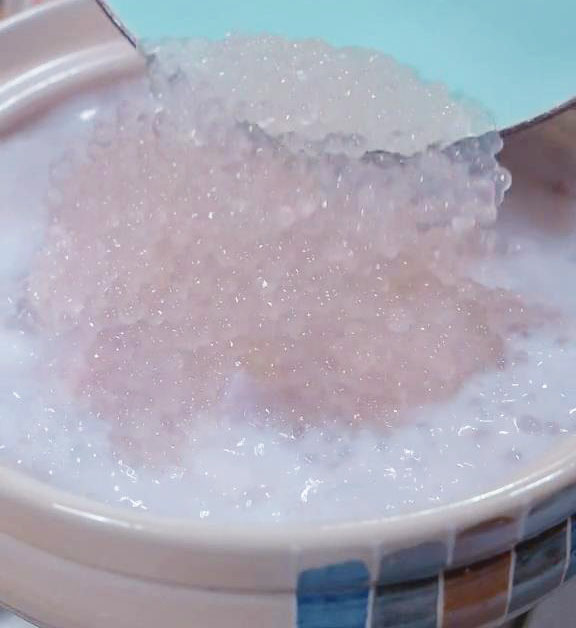
Transfer the soup to a dessert bowl to enjoy a serving of creamy sweet dessert for a snack or after a meal.
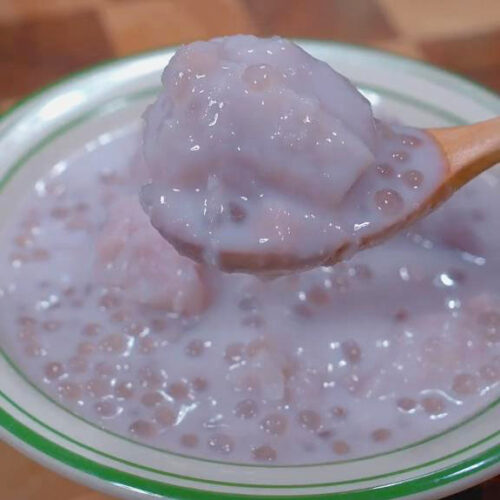
How To Make Taro Sago Dessert Soup
Equipment
- 2 Clay pots or cooking pots (1 for boiling taro, 1 for boiling sago)
- Stirrer
- Dessert bowl
Ingredients
- 500 g peeled and cubed taro adjust the amount according to you preference
- 100 g rock sugar
- 1000 ml water
- Sago choose the amount of sago you like to cook
Instructions
Prepare The Taro
- Prepare the taro by peeling it and cutting it into large cubes.
- Then, place it in a clay pot and add rock sugar and water.
- Cover and simmer for 15 minutes.
Boil The Sago
- While the taro is cooking, prepare another pot with water for boiling the sago and bring it to a boil.
- When the water boils, add the sago and cook for 15 minutes. When cooking sago, it's important to stir well to ensure even cooking and prevent sticking.
- After 15 minutes, turn off the heat and let it simmer for another 15 minutes. The sago should be completely transparent and should sink to the bottom. If the center of the sago is still white, let it sit longer in hot water to continue cooking.
- Then, drain the water and rinse the cooked sago in cold water. Rinse it three times. This step is important to remove excess starch and prevent clumping.
Assemble The Dessert
- Next, go back to the boiling pot of taro and add coconut milk.
- Add the sago and mix well. Refrain from over-stirring as this might cause the ingredients to break and become mushy.
- Transfer the soup to a dessert bowl to enjoy a serving of creamy sweet dessert for a snack or after a meal.

